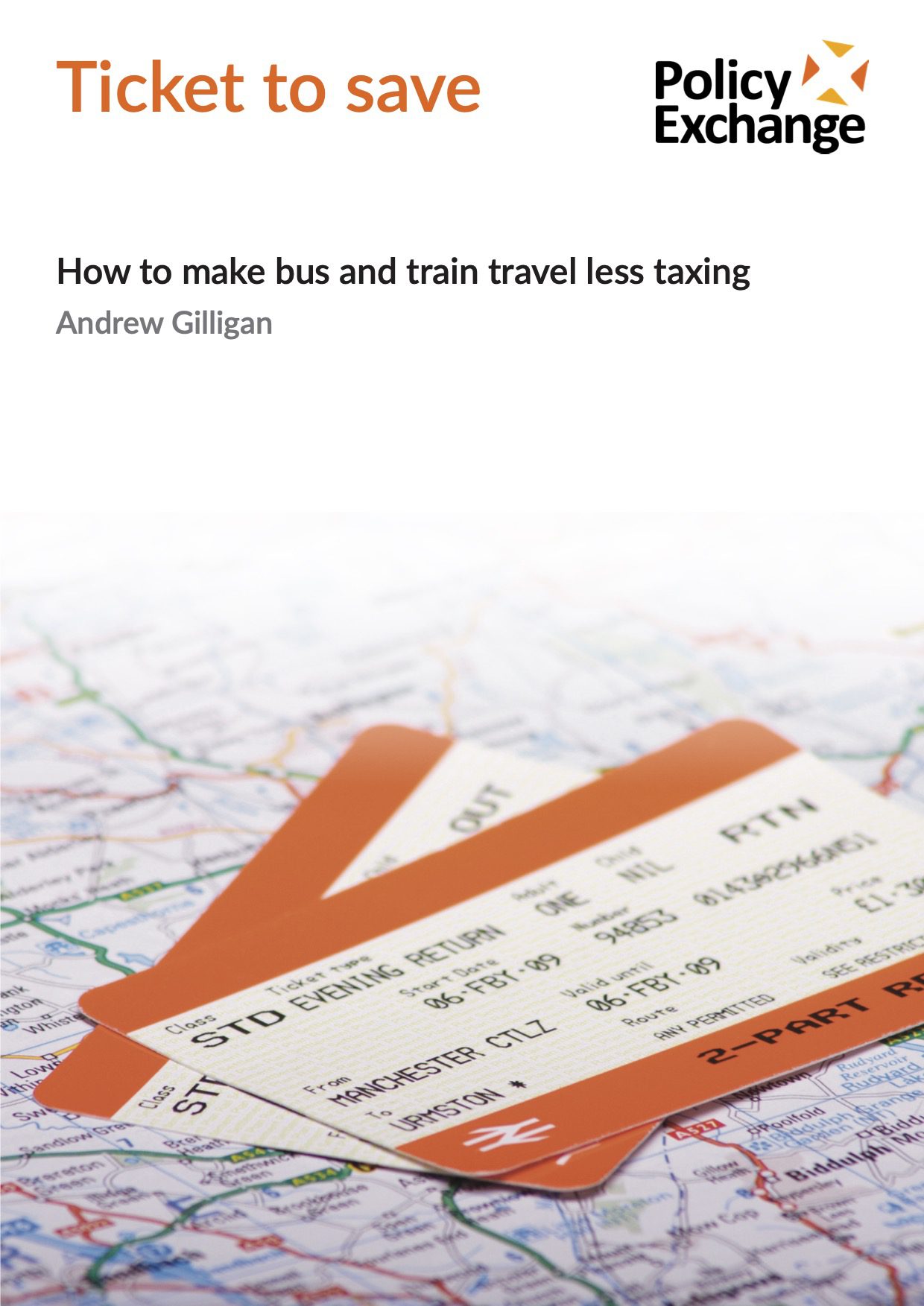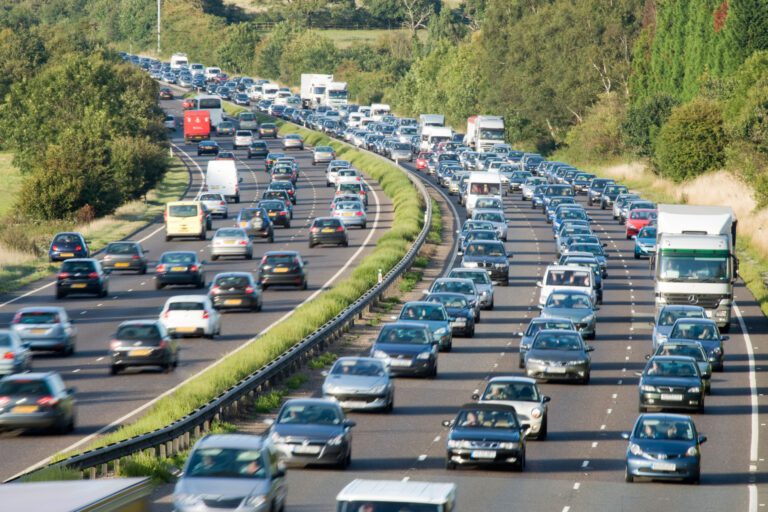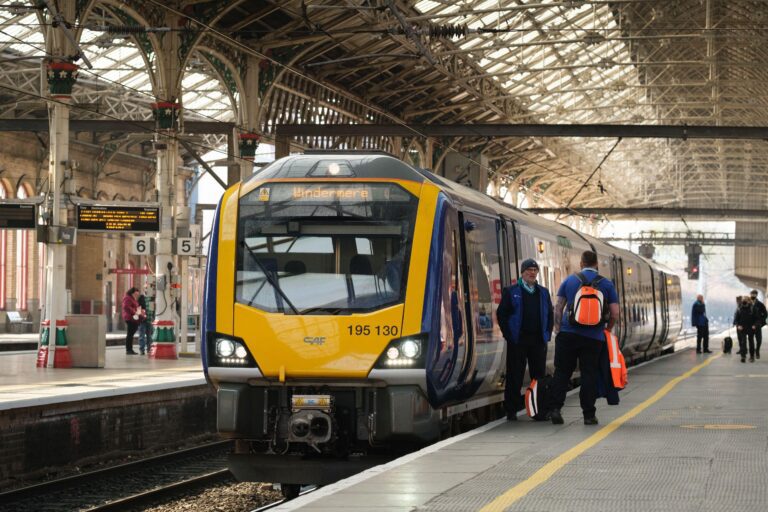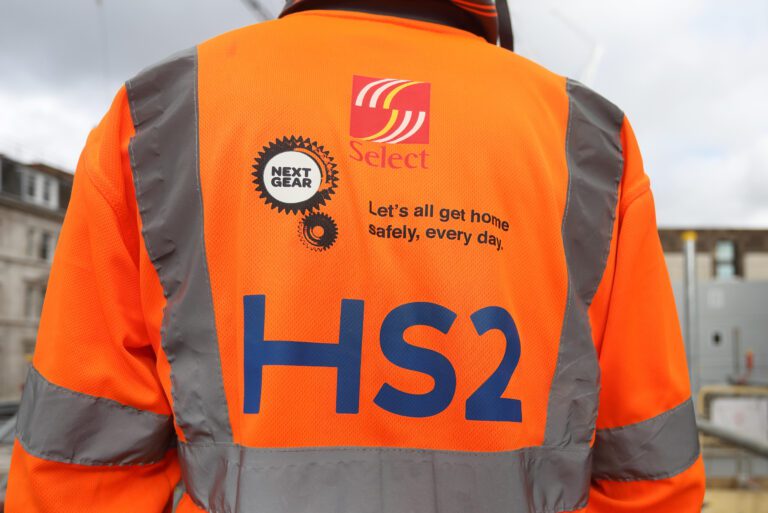Authors
Content
Executive summary
As rail fares go up again this week, we propose something that would both ease the pain and address four of the government’s wider priorities: tackling the cost of living; getting people back into the labour market; getting existing workers back into the office; and meeting the UK’s net-zero pledge.
Commuters by bike or low-emission car can already save hundreds or thousands of pounds a year by buying their vehicles out of pre-tax income, in effect setting the cost against tax. But commuters by bus and train cannot do this, though they are on average less affluent, and there are more of them. Public transport season tickets are the only low-carbon form of commuting with no tax relief.
We should end this anomaly. We recommend that tax relief at the basic rate be extended to season tickets and passes, saving bus and rail travellers hundreds of pounds a year. A basic rate taxpayer commuting from, say, Croydon to central London could save around £800 a year, from Wallasey to Liverpool around £650, from Plymouth to Exeter around £1000.
To ensure that the scheme benefits lower-paid workers who may not be able to afford the upfront cost of a weekly or monthly pass, we recommend that, as in the US, stored-value tickets are also covered. Capping relief at the basic rate limits the cost to the exchequer and avoids providing higher benefits to the wealthy.
Many other countries already offer commuting tax relief. Ireland’s “Taxsaver” season ticket has played a significant part in raising public transport use there. As with Cycle to Work in Britain, the employer buys the ticket, deducting its value from the employee’s pre-tax pay and thus saving them up to half the cost.
Between Taxsaver’s introduction in 1999 and the eve of covid, the number of cars entering central Dublin during the morning peak fell by more than 30 per cent, despite an economic boom (other changes, such as better bus priority and the opening of two tramlines, also helped.)1.https://www.dublincity.ie/sites/default/files/media/file-uploads/2018-08/Canal_Cordon_Counts_2009.pdf and https://www.nationaltransport.ie/wp-content/uploads/2020/12/Canal-Cordon-Report-2019-V3.pdf – table 1, page 4
A significant cause of Britain’s growth problem is high levels of economic inactivity. Nine million working-age people are not working or looking for work and more people have left the labour market post-pandemic in Britain than in almost any other country.2.https://www.ons.gov.uk/employmentandlabourmarket/peoplenotinwork/unemployment/articles/workermovementsandinactivityintheuk/2018to2022 – figure 7 Employers say that high commuting costs are a key factor discouraging people from entering or re-entering the labour market.3.https://committees.parliament.uk/writtenevidence/111913/pdf/ – for further details, see chapter 3
Employers’ organisations also believe that the rise in working from home has damaged growth, though this is more disputed. Two years after the end of lockdown, WFH remains higher in Britain than in any other major European country and workers in the UK appear keener on it than anywhere else4.https://wfhresearch.com/wp-content/uploads/2022/09/Working-from-Home-Around-the-World-23-August-2022.pdf – pages 39-43 – with clear impacts on historically highly-productive city-centre economies, and potential (though still unclear) wider impacts on productivity, collaboration and staff development.
There is a direct link between public transport use and the desire to work from home. Rail commuters are more than twice as likely as car commuters to work from home for some of the week5.https://www.ons.gov.uk/file?uri=/employmentandlabourmarket/peopleinwork/employmentandemployeetypes/datasets/characteristicsofhomeworkersgreatbritain/september2022tojanuary2023/characteristicsofhomeworkersseptember2022tojanuary2023.xlsx – table 15, partly because rail commuting costs are much higher in Britain than the European average. In London, with its high volumes of public transport commuters, a remarkable 59 per cent of the entire workforce now works from home for all or some of the week.6.ibid, table 7
The cost gap between Britain and other nations has widened since the pandemic. While other countries have reduced fares or introduced cut-rate tickets, Britain has largely increased fares, most recently this week. (England’s £2 maximum bus fare is welcome, but temporary.)
In a recent report, the government’s own Office of Tax Simplification cited UK commuting costs as a barrier to the return to the workplace and called on ministers to “clarify” the treatment of business travel and commuting. It added that a number of hybrid workers “suggested that they need the encouragement of tax relief to make the trip into the office.”7.https://assets.publishing.service.gov.uk/government/uploads/system/uploads/attachment_data/file/1123351/OTS_Hybrid_and_distance_working_report_Dec_2022.pdf
Transport is also the area where least progress has been made towards meeting the UK’s climate commitments. The Committee on Climate Change says that not all the reductions we have pledged in transport can be achieved through electrification of the road vehicle fleet – at least a fifth has to be done through reducing demand for car travel, moving towards modes of transport such as buses, rail and walking which use less energy per passenger moved.8.https://www.theccc.org.uk/wp-content/uploads/2020/12/Sector-summary-Surface-transport.pdf – page 46 Incentivising all forms of lower-carbon transport through the tax system will be needed to achieve this.
Significant amounts of money have been invested in a public transport network that is now, with the fall in commuting, seeing revenue settle at 25-30 per cent below pre-covid levels. Unless we can rebuild demand, we face the prospect of significant decline in bus and rail services, service cuts and line closures, with further negative implications for labour market growth, workplace return, social inclusion and carbon reduction.
One approach would be to reduce all public transport fares – but this would be untargeted, benefiting many people whose behaviour we do not need to change, and very expensive. A tax break would be more targeted and potentially far cheaper.
Ireland’s Taxsaver is more generous than our proposal, offering full tax relief including to top-rate taxpayers. Ireland’s personal tax rates and (before the tax relief) transport fares are similar to Britain’s. But in the last pre-covid year, Taxsaver cost the Irish exchequer only Euro11.3 million (just under £10 million) for 48,000 users, an average of Euro235 (£208) per user.9.https://assets.gov.ie/243743/c7696ee4-d656-487b-ad53-a00ad4ea536a.pdf – page 25
DfT estimates suggest that a UK bus-only tax relief scheme would cost around £115m a year, assuming a basic rate of tax and NI relief (32%) and a 25 per cent takeup (about the same as Ireland.) That, for perspective, is less than a single week’s spending on HS2.
On the same basis, if rail were included, the cost could be as little as £215 million per year. Pre-covid, around £550m of rail season tickets were sold each quarter, £2.2bn per year, though it has collapsed to about £700m per year since.10.See page 16
Exactly how many existing passengers would take part, how many new or resumed passengers would start buying season tickets and how much tax relief they would claim is uncertain, meaning that cost estimates are in practice likely to be higher and are subject to a wide range. Options and indicative costs are given later in the paper.
After the pandemic, Britain needs something to reboot labour market participation, public transport use and city-centre working. This scheme can be part of the answer, at relatively modest expense.
Next chapterHigh public transport commuting costs appear to be a factor in this country’s reluctance to return to the office
Lockdown ended two years ago, but in Britain, at least, working from home has not. According to the US National Bureau of Economic Research’s Global Survey of Working Arrangements, the UK last year had the highest rate of WFH of any European country surveyed, an average of two days per worker per week.11.https://www.nber.org/system/files/working_papers/w30446/w30446.pdf – figure 1, page 38 It had the highest attachment to WFH of any country in the world surveyed, with 42 per cent of British employees saying they would resign or seek another job that allowed WFH if their current employer made them come back to the workplace five days per week.12.ibid, figure 5, page 42
Before the pandemic, 12 per cent of UK working adults worked from home all or some of the time. Across the whole two years since the last lockdown ended in March 2021, that number has seldom fallen below 30 per cent. In the most recent period surveyed by the Office of National Statistics, 25 January to 5 February 2023, 40 per cent reported having worked from home on some or all of those days.13.https://www.ons.gov.uk/employmentandlabourmarket/peopleinwork/employmentandemployeetypes/articles/characteristicsofhomeworkersgreatbritain/september2022tojanuary2023 – figure 1
According to the ONS, there is a clear correlation between rail commuting and reluctance to return to the workplace. Between September 2022 and January 2023, 64 per cent of those who commuted by train, and 65 per cent of those who commuted by tube or light rail, worked from home for part of the week. This compared with 31 per cent of those who commuted by car.14.https://www.ons.gov.uk/file?uri=/employmentandlabourmarket/peopleinwork/employmentandemployeetypes/datasets/characteristicsofhomeworkersgreatbritain/september2022tojanuary2023/characteristicsofhomeworkersseptember2022tojanuary2023.xlsx – table 15 The highest UK region for homeworking was London, with its preponderance of public transport commuters. Some 59 per cent of working Londoners work from home for all or part of the week, an extraordinarily high figure.15.ibid, table 7
Commuting’s cost, of course, is only one of a number of factors influencing these choices, the others being its time, hassle and having a job that allows you to choose (bus commuters, more of whom work in jobs that can’t be done from the kitchen table, were much less likely to be hybrid workers, at 28 per cent.)16.ibid, table 15 Rail strikes will also have had an impact, though with only nine days of national strikes in this period it will have been modest. But polling suggests that commuting cost is a significant factor in inhibiting the return to the office17.https://www.standard.co.uk/news/london/commute-cost-expensive-work-from-home-london-offices-b1025275.html, with 68 per cent of workers saying that helping them with the cost of travel would encourage them to return full-time.18.https://www.hrmagazine.co.uk/content/news/commuting-costs-stop-workers-from-returning-to-office/
Cost is also the biggest difference between commuting in Britain and in other countries. The average commute around, say, New York or Paris is little different in duration than in London – but, even before tax relief, it is much cheaper. That may help explain those cities’ and countries’ higher rates of return to the office.
Even before this week’s fare rises, the gap between British fares and those of several other countries has widened since the pandemic. To encourage a return to public transport, Austria has introduced a Euro1095 (£963) “climate ticket” giving unlimited bus and train travel thoughout the country for a year. In April, Germany will bring in a ticket allowing travel on local rail and bus services for Euro49 (£41) per month. Ireland has reduced public transport fares by 20 per cent (the Taxsaver discount applies on top of this.) Britain’s main contribution so far, a £2 maximum bus single fare, is more limited, and expires in June.
In a recent report, the government’s own Office of Tax Simplification identified UK commuting costs as a barrier to the return to the workplace and called on ministers to “clarify” the treatment of business travel and commuting. It added that a number of hybrid workers “suggested that they need the encouragement of tax relief to make the trip into the office.”19.https://assets.publishing.service.gov.uk/government/uploads/system/uploads/attachment_data/file/1123351/OTS_Hybrid_and_distance_working_report_Dec_2022.pdf
It is not this paper’s remit to say whether the current level of home and hybrid working is good or bad – but it has undeniably impacted the economies of big cities, hitherto among the most dynamic and productive places in Britain. And those responsible for the stewardship of the economy appear to believe that it is, on balance, bad. Tony Danker, director general of the CBI, recently said that if “you ask most bosses, everybody secretly wants everyone to come back to the office.”20.https://www.theguardian.com/business/2023/jan/27/most-bosses-secretly-want-all-staff-back-in-offices-says-head-of-cbi Ministers have also expressed concern about the significant decline in public service productivity – currently 7.4 per cent below pre-covid levels21.https://www.ons.gov.uk/employmentandlabourmarket/peopleinwork/labourproductivity/articles/ukproductivityintroduction/julytoseptember2022#public-service-productivity – which has accompanied increased homeworking in the civil service and local government.
Next chapterEmployers say high public transport costs are a factor in the disappearance of people from the labour market altogether
Much less disputed as a cause of Britain’s growth problem is the shrinking of the labour force. As is now well known, economic inactivity – the number of working-age people not in work or seeking work – has grown in Britain since the pandemic by more than in nearly any other OECD country (in most countries, by contrast, inactivity has shrunk).22.https://www.ons.gov.uk/employmentandlabourmarket/peoplenotinwork/unemployment/articles/workermovementsandinactivityintheuk/2018to2022#the-participation-puzzle – figure 7
Almost 9 million working-age people in Britain are economically inactive23.https://www.ft.com/content/684f88cd-a7ab-4325-a26f-88aead79d2f3, 565,000 more than since the pandemic24.https://www.ons.gov.uk/employmentandlabourmarket/peoplenotinwork/unemployment/articles/workermovementsandinactivityintheuk/2018to2022, though there are tentative recent signs that some are returning. Ministers and the Prime Minister have said that improving labour market participation is a top priority for government and have suggested a number of tax breaks to encourage people back, including a tax-free period for over-50s returning to work.25.https://www.thetimes.co.uk/article/sickness-benefit-kept-workforce-crisis-0cklxvs50
There is no definitive evidence for what has caused the problem; even obvious-sounding answers such as a rise in long-term health conditions since the pandemic are questioned. But many business and employers’ groups say that the high cost of commuting is a factor.
The British Retail Consortium says that the “increase in travel costs to and from work” has “contributed to the considerable contraction in the labour force.”26.https://committees.parliament.uk/writtenevidence/111913/pdf/ The Heart of London Business Alliance, representing more than 600 West End businesses, cites transport costs as having “significant impacts” on the labour shortages suffered by its members and calls for “greater support for transport to and from work” to address these.27.https://committees.parliament.uk/writtenevidence/111806/pdf/
The Recruitment and Employment Confederation28.https://committees.parliament.uk/writtenevidence/111801/pdf/ and the Association of Professional Staffing Companies29.https://committees.parliament.uk/writtenevidence/111784/pdf/ also highlight public transport problems as a factor in labour shortages. There is anecdotal media evidence of individuals deciding against returning to employment because the high cost of commuting has tipped the balance against it.30.https://www.theguardian.com/business/2023/feb/13/full-time-part-time-work-no-longer-pays-uk-economy
Research by the Social Exclusion Unit31.https://www.ilo.org/wcmsp5/groups/public/—ed_emp/—emp_policy/—invest/documents/publication/wcms_asist_8210.pdf, the Intergenerational Foundation32.http://www.if.org.uk/wp-content/uploads/2013/05/No_Entry_final_report_definitive.pdf and the Work Foundation33.http://www.theworkfoundation.com/Reports/327/Missing-Million-Policy-Paper-2-Transport-barriers-to-youth-employment shows how expensive transport prevents younger and poorer people finding work. As the 2021 buses white paper said, some 44% of bus trips are for work or education, compared with 27% of solo car journeys. In cities outside London, 77% of jobseekers do not have regular access to a car, van or motorbike.34.https://assets.publishing.service.gov.uk/government/uploads/system/uploads/attachment_data/file/980227/DfT-Bus-Back-Better-national-bus-strategy-for-England.pdf
With the decline in commuting, the public transport network is now seeing revenue settle at around 70 to 75 per cent of pre-covid levels. Part of the answer is to reduce costs, however strongly the unions may object. But unless we can also rebuild demand, there are likely to be significant reductions in bus and rail services, with further negative implications for labour market growth, workplace return and social inclusion.
If a tax deduction is to be of full value for the poorest workers, who may not be able to afford the cost of an upfront weekly or monthly pass, it could be a US-style scheme where (at least for bus) pre-paid tickets are also included, or a scheme where employers were encouraged to offer loans to cover the initial cost.
Next chapterBritain is relatively unusual in not operating a commuter tax relief programme
Many other countries provide some form of tax relief for public transport commuters. The United States’ federal tax code allows relief worth up to $300 (£250) a month for the cost of commuting by bus, train or subway; employers subtract the costs from pre-tax income. Notably, a season ticket does not have to be bought; stored-value fare cards and the like can also be used.35.https://bestworkplaces.org/resource-center/faq-on-qualified-transportation-fringe-benefits In several cities, including New York, Los Angeles, Seattle, San Francisco, Philadelphia and Washington DC, and statewide in New Jersey, it is or will be mandatory for most employers to offer the benefit.36.https://www.tri-ad.com/home/commuter-ordinances/ Almost three million people in those places use it.37.https://greener-vision.com/wp-content/uploads/2014/01/Bus-bonus-June-2017.pdf
In France, employers are responsible for reimbursing 50% of employee travel costs, tax free. In the Netherlands, commuting costs on public transport are tax free, with an allowance for private commuting. In Denmark, an employee may claim a deduction for commuting where the round trip exceeds 24km, based on a scale rate per mile. Luxembourg enables a tax free allowance to be claimed for commuting based on the distance travelled, and Poland allows a small fixed rate deduction for employees towards commuting travel costs.
The European country perhaps closest to Britain is Ireland, both culturally; in personal tax; and (historically) in high public transport fare levels. It has seen a huge rise in public transport use, linked partly to economic growth and service improvements – but also to the introduction of tax relief on bus and train passes through its “Taxsaver” scheme.
Since 1999, Irish season ticket or travel pass buyers have been able to claim full relief at either the basic (20%) or higher (40%) rate, plus 8% for Ireland’s equivalents of national insurance. After this week’s fare rise, a London all-zone travelcard costs £2,976 a year. With the tax relief, its Dublin equivalent costs a higher-rate taxpayer Euro806 (£708) a year, a saving of almost half on the normal price, and a basic-rate taxpayer Euro1116 (£981).38.https://www.taxsaver.ie/Ticket-Calculator/Ticket-Calculator/
The passes are available for commuting in and around all the Republic’s main cities and point-to-point journeys in rural areas. There is even a ticket allowing a year’s unlimited travel on all bus and train services in the country – for about the same price as the London travelcard. Taxsaver is only available to salaried employees whose employers take part in the scheme; as with a bicycle in Britain, the employer buys the ticket and the employee repays them out of pre-tax income.
Taxsaver’s cost to the exchequer, according to the finance ministry, is modest: Euro5.5 million (£4.83m) in the most recent available year, when only 24,000 people used it due to covid, and Euro11.3 million (£9.93m) in the previous year, pre-covid, when 48,000 people used the scheme, an average cost to the exchequer per user of Euro235 (£208.)39.https://assets.gov.ie/243743/c7696ee4-d656-487b-ad53-a00ad4ea536a.pdf This takeup figure represented about 27 per cent of the 174,00040.https://www.cso.ie/en/releasesandpublications/ep/p-cp6ci/p6cii/p6mtw/ Irish commuters who travelled by public transport. Other travellers may not be aware of the ticket, or may not be salaried employees, or work for an employer that offers it.
In 1999, the year of the ticket’s introduction, 73,147 cars and taxis entered central Dublin during the three morning peak hours.41.https://www.dublincity.ie/sites/default/files/media/file-uploads/2018-08/Canal_Cordon_Counts_2009.pdf By 2019, the last pre-covid year, despite significant economic and employment growth, that number had fallen by 31 per cent, to 50,680.42.https://www.nationaltransport.ie/wp-content/uploads/2020/12/Canal-Cordon-Report-2019-V3.pdf – table 1, page 4 Taxsaver was not the only factor in this change: new bus priority schemes, suburban rail services and two new tramlines made the city’s public transport more attractive. But it was a significant contributor.
A scheme allowing tax relief on bus passes in Britain did operate briefly in the 2010s, before being withdrawn because HMRC said it was not allowed.43.https://employeebenefits.co.uk/issues/april-2010-online/pmm-withdraws-greentravel2work-scheme/ UK tax legislation does allow employers to support some bus travel to get staff to work, but only covers dedicated buses for staff or financial support for a particular route. Any ticket or pass “must be for a specific service or services that serve the workplace. A pass that covers a network of routes in a local area or zone will not meet the terms of the exemption.”44.https://www.gov.uk/hmrc-internal-manuals/employment-income-manual/eim21855 This severely limits the value and scope of the concession.
Next chapterBus and rail are the only green forms of commuting which enjoy no tax advantages
Transport is the area where the least progress has been made towards meeting the UK’s climate commitments. The Committee on Climate Change says that not all of the carbon reductions we have pledged in surface transport can be achieved through electrification of the road vehicle fleet – about a fifth has to be done through behaviour change, moving towards modes of transport such as buses, rail and walking which use less energy per passenger moved.45.https://www.theccc.org.uk/wp-content/uploads/2020/12/Sector-summary-Surface-transport.pdf – page 46 Incentivising all forms of lower-carbon transport through the tax system will be needed to achieve this.
The UK tax system does recognise the importance of lower-carbon travel, but only selectively. The successful Cycle to Work scheme allows employees to in effect set the cost of a bike and accessories against their income tax and national insurance. The employer buys the bike and the employee repays them out of pre-tax income; after the end of the repayments, and a small “ownership charge,” the bike is theirs. Employees can save between 32 and 47 per cent, depending on their top tax band; employers save up to 13.8 per cent in employer national insurance contributions.
There is no longer a limit on the cost of the bike and accessories you can buy, though it may be used only by the employee and must be mainly for commuting to work. An additional-rate taxpayer on £200,000 a year buying a £1000 bike would in effect get it for £530, saving £470; a basic-rate taxpayer on £25,000 a year buying the same bike would get it for £680, saving £320.46.https://www.cyclescheme.co.uk/calculator (The “ownership charge” at the end can reduce the value of this saving by up to £70.) In 2021/22, some 188,000 people used the scheme at a cost to the exchequer of £90 million, or £479 each.47.https://assets.publishing.service.gov.uk/government/uploads/system/uploads/attachment_data/file/1128167/non_structural_cost_estimates_january_2023.ods – table “multiple tax types”
Those wanting a car can benefit from similar arrangements: the employer buys the vehicle, the employee repays them from pre-tax salary. Unlike with bikes, there is a “benefit-in-kind” tax. For most petrol and diesel drivers this is prohibitive, equalling or exceeding the income tax which would be saved, but for electric vehicles the BiK tax is small: 2 per cent of the vehicle’s taxable list price until April 2025, then rising by 1 per cent each year until 2028. Benefit-in-kind taxes for hybrid vehicles are also less than the income tax which would otherwise have to be paid, at between 2 and 19 per cent of list price.
The savings on such vehicles can be enormous: an additional-rate taxpayer on £200,000 a year buying a basic Tesla Model 3 (which lists at £43,000) can save around £490 a month, or 44 per cent, even with the benefit-in-kind charge. A basic-rate taxpayer on £50,000 a year buying the same car saves about 31 per cent, or £340 a month. In both cases, their employer saves £250 per month in VAT and national insurance.48.https://elmodrive.com/business/salary-sacrifice/calculator/
Some 52,000 people received electric car tax benefits in 2020/21, the latest year for which figures are available, and a further 85,000 received benefits for hybrid cars emitting less than 75g of C02 per km.49.https://assets.publishing.service.gov.uk/government/uploads/system/uploads/attachment_data/file/1106353/Tables_1_to_4.ods – table 2a There are no costings broken down by emission class, but the total taxable value of all company car benefits was £4.62 billion in 2020/21.50.https://www.gov.uk/government/statistics/benefits-in-kind-statistics-september-2022/benefit-in-kind-statistics-commentary-september-2022 Around 89 per cent of recipients (across all emission classes) earned more than the UK average salary that year.51.https://assets.publishing.service.gov.uk/government/uploads/system/uploads/attachment_data/file/1106353/Tables_1_to_4.ods – table 3a Clearly, with an average electric car (before the tax savings) costing just under £50,000, this is a benefit largely enjoyed by the better-off.
None of this is to say that the cycle to work scheme or the tax incentives for electric vehicles are wrong, or should end. Carbon reduction is achieved whoever is doing the driving, or cycling. But it is important that climate policies are recognised as fair to all income groups, not just those who can afford to buy expensive vehicles. And it is anomalous that the lower-carbon transport used by the less wealthy should be excluded from tax relief. People in the poorest quintile, for instance, make three times as many trips by bus as the wealthiest, travelling two and a half times as far by distance.52.https://assets.publishing.service.gov.uk/government/uploads/system/uploads/attachment_data/file/1101103/nts0705.ods
It is anomalous, too, that the best-used forms of lower-carbon transport should be excluded. Public transport accounts for eight times more passenger miles than electric or hybrid cars and vans, and nine times more passenger miles than cycling.53.ibid. Assumes electric or hybrid cars/vans are responsible for 3% of car/van mileage shown. The tax system should be neutral between lower-emission modes.
Next chapterCosts to the exchequer could be relatively modest, though there is a wide range
The Department for Transport has costed a tax relief scheme for buses only. The central cost to the exchequer, assuming 50 per cent uptake, was around £230 million (£264m in Jan 2023 prices). The low cost, assuming a 25 per cent uptake, a 32 per cent taxpayer saving and a 13.8% employer saving, was £102 million (£115.4m in Jan 2023 prices). The calculations in both cases included the effect of existing tax allowances on individuals’ effective tax rates and assumed that a proportion of new users were attracted to bus by the relief.
Experience in Ireland, with the most comparable tax, earnings mix and public transport fares to the UK, suggests that the 25% uptake scenario is more likely. Some 48,00054.https://assets.gov.ie/243743/c7696ee4-d656-487b-ad53-a00ad4ea536a.pdf of Ireland’s 174,00055.https://www.cso.ie/en/releasesandpublications/ep/p-cp6ci/p6cii/p6mtw/ public transport commuters used the Taxsaver ticket in the last pre-covid year, a takeup rate of 27.5 per cent. The tax relief available ranges in most cases from 24 per cent to 48 per cent.
Ireland’s finance ministry states that the scheme (which covers bus and train) that year cost the Irish exchequer Euro11.3 million (£9.93m; £11.6m in 2023 prices).56.https://assets.gov.ie/243743/c7696ee4-d656-487b-ad53-a00ad4ea536a.pdf It is not clear whether this includes the cost of the tax relief granted to the employer, or just to the employee.
In 2017 the organisation Greener Journeys, working with KPMG, costed a UK bus-only scheme to the exchequer at £75m (£88m in 2023 prices), with benefits to the economy double that.57.https://greener-vision.com/wp-content/uploads/2014/01/Bus-bonus-June-2017.pdf The DfT work found lower but still positive benefits.
If rail is included, costs would be higher. Rail season ticket sales, still heavily down on pre-covid levels, were £526m in 2021/258.https://dataportal.orr.gov.uk/media/2064/passenger-rail-usage-jan-mar-2022.pdf and £330m in the first six months of 2022/3,59.£166m in Q1 and £164m in Q2, see https://dataportal.orr.gov.uk/media/2124/passenger-rail-usage-apr-jun-2022.pdf and https://dataportal.orr.gov.uk/media/2167/passenger-rail-usage-jul-sep-2022.pdf implying perhaps £700m in the full year. Assuming a 25% takeup rate, basic rate tax relief of 32% (tax and national insurance), average employer’s NI relief of 13.8%, and that 20% more season tickets were sold as a result, a rail tax relief scheme could cost the exchequer £100 million per year, making a total of perhaps £215m (2023 prices) for rail and bus.
If season ticket sales recover to pre-covid levels (£2.2bn per year), the cost for rail at 25% takeup could be around £250m per year, making about £365m for rail and bus. In practice costs are likely to be greater, since only the rail element of multi-modal tickets such as the London Travelcard and the Merseyside Trio ticket is included in the revenue figures.
Costs would, of course, also be higher if takeup was greater than 25%, though anything above 50% would be unlikely, since not all commuters are salaried employees, not all employees would be aware of the scheme and not all employers would offer it. At 50 per cent takeup and pre-covid levels of purchase (unlikely to be reached in practice for many years), the cost for a rail and bus scheme could exceed £800 million per year.
To put this into perspective, even £800m is about seven weeks’ spending on HS2 .
If this was deemed too much, however, further restricting the relief could make it cheaper, for instance by not allowing relief on employers’ National Insurance or by capping the total amount of relief available each year.





